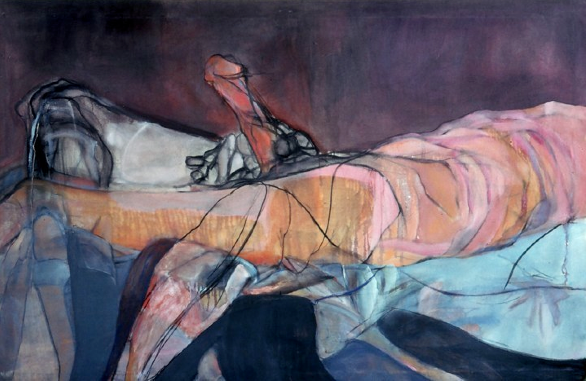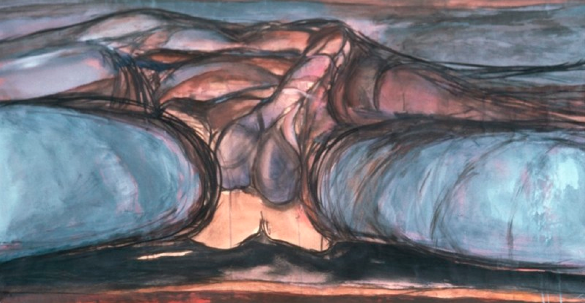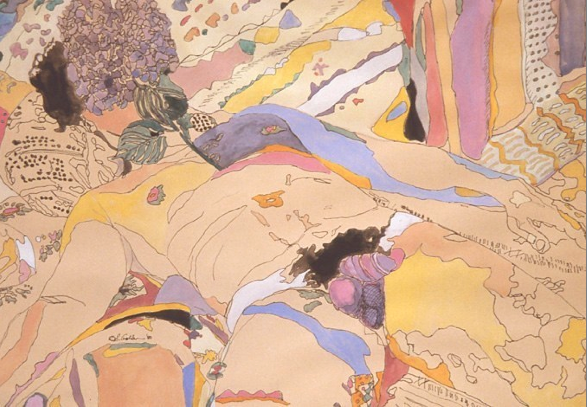Representations of the male figure in art are far less common than works depicting women. A long history of straight men dominating the art world has led to many images of winsome women, but fewer of beautiful men (I’ve written on this subject before; if you’d like to read more about the lack of male figures in art check it out here).
Every Female Gaze Friday I will post a woman-created work of art depicting a man—one small act to reverse the male gaze! Not all images will be provocative, many will be nonsexual or even disturbing. Hopefully this will be a way of learning more about women artists (as well as looking at dudes)!
This week we’ll look at the male nudes of Eunice Golden:
Golden was a revolutionary feminist artist and member of the Fight Censorship group, a collective of female artists “who have done, will do, or do some form of sexually eplicit art, i.e., political, humorous, erotic, psychological”. Many feminist artists were exploring phallic imagery, and were frequently censored for their depiction of the male nude. Although female nudes were an art world standard, galleries and critics were unwilling to accept similar images of men. Artists who used the eroticized male figure were, in some cases, barred from teaching positions, had their work confiscated, and were rejected by the mainstream establishment. Artists like Joan Semmel who painted both the male and female nude found their images of women in high demand and their images of men ignored. This is a form of censorship that is not often discussed. Rather than blatantly removing eroticized male figures, curators and jurors simply ignored their innovation. The disinclusion of feminist artists from opportunities that could lead to art world success is a form of censorship.
According to Golden, “ In the 1960’s, while painting the male anatomy, I didn’t consider that it would be construed as heretical and revolutionary. Stifled by the existing definitions of wife and mother, this work was a stream of consciousness outpouring of emotionally and sensually charged images that reflected who I was: a heterosexual woman with erotic needs and fantasies”.
Golden’s paintings of men take the form of landscapes. The artist and the viewer are exploring the male body. Her work is tactile, you feel as though you can reach out and feel her forms. Her figurative expressionism abstracts the figure, and yet the paintings feel intimate at the same time. By focusing so closely on certain parts of the male form, the viewer is drawn in emotionally and physically. One of the revolutionary aspects of Golden’s work is that the presumed viewer is not male, as in most works of art, but female. Her images are of men, for women. They are a powerful example of the female gaze.




No comments:
Post a Comment